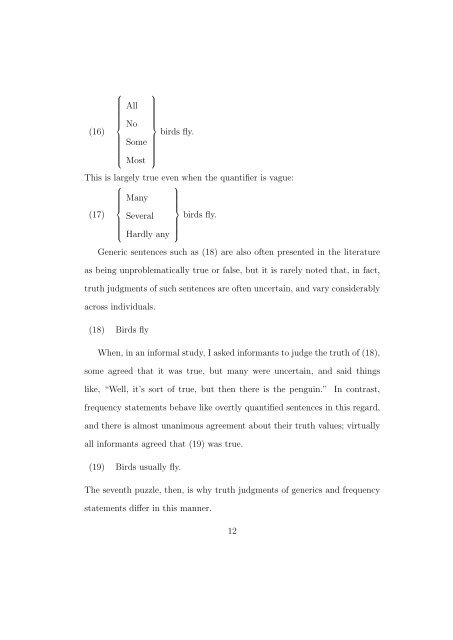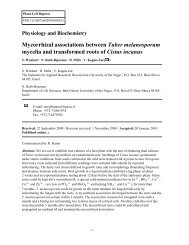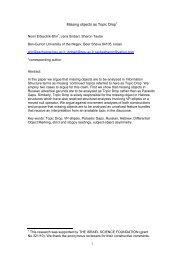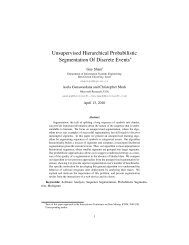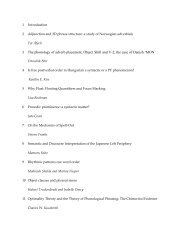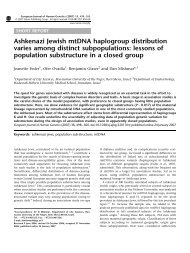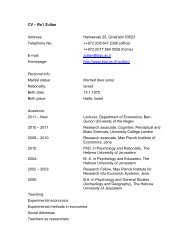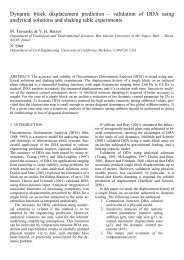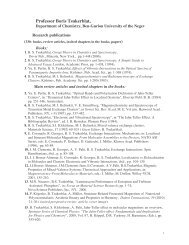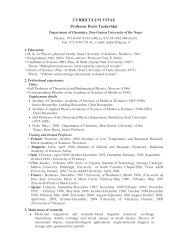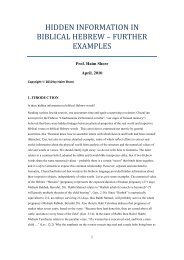Generics, Frequency Adverbs, and Probability
Generics, Frequency Adverbs, and Probability
Generics, Frequency Adverbs, and Probability
You also want an ePaper? Increase the reach of your titles
YUMPU automatically turns print PDFs into web optimized ePapers that Google loves.
⎧<br />
All<br />
⎫<br />
(16)<br />
⎪⎨<br />
No<br />
Some<br />
⎪⎬<br />
birds fly.<br />
⎪⎩<br />
Most<br />
⎪⎭<br />
This is largely true even when the quantifier is vague:<br />
⎧<br />
⎫<br />
Many<br />
⎪⎨<br />
⎪⎬<br />
(17) Several birds fly.<br />
⎪⎩<br />
Hardly any<br />
⎪⎭<br />
Generic sentences such as (18) are also often presented in the literature<br />
as being unproblematically true or false, but it is rarely noted that, in fact,<br />
truth judgments of such sentences are often uncertain, <strong>and</strong> vary considerably<br />
across individuals.<br />
(18) Birds fly<br />
When, in an informal study, I asked informants to judge the truth of (18),<br />
some agreed that it was true, but many were uncertain, <strong>and</strong> said things<br />
like, “Well, it’s sort of true, but then there is the penguin.” In contrast,<br />
frequency statements behave like overtly quantified sentences in this regard,<br />
<strong>and</strong> there is almost unanimous agreement about their truth values; virtually<br />
all informants agreed that (19) was true.<br />
(19) Birds usually fly.<br />
The seventh puzzle, then, is why truth judgments of generics <strong>and</strong> frequency<br />
statements differ in this manner.<br />
12


